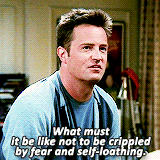Binge /binj/ verb
Indulge in an activity to excess.
Synonyms of binge include, overindulge, gorge and bender.
Used to describe activities such as drinking, eating and shopping, the word is ingrained in our minds as negative. Now, it’s being used to describe TV viewing habits. The term binge watching was introduced in the 1990s as the practice of watching multiple episodes of a television program in rapid succession. Netflix viewers defined binge watching as “watching between two to six episodes of the same TV show in one sitting” in a survey conducted through Harris Interactive, which is actually considered moderate behavior with an average of 2.3 episodes per sitting.
Although what many view as a fairly new phenomenon, blaming services like Netflix, binge watching has been around since the marathon, “in which viewers or readers engage in many hours-worth of media in a condensed time period.” Marathons originated in the 1980s and aired for many reasons: to allow viewers to catch up on a series, to celebrate a holiday or to lead into a highly anticipated episode. From Disney Channel Movie Marathons to Law & Order, people participated in binge-watching before streaming services were around.
In 2014, FXX aired a 12-day non-stop marathon of The Simpsons, playing every episode that had already been released in chronological order, which became the highest rated broadcast day in the history of the network. People didn’t need Netflix to participate in this “binge” that caused FXX to rank within the top five networks in basic cable each night of the marathon. But these services are being blamed anyway for creating this frowned upon activity.
With the introduction of streaming services, it can be argued that binge-watching has become new and improved since the days of the marathon, instead of making it a disgustingly unhealthy addiction. Like other stigmatized behaviors in the past- think video games, which are dominating and have been proven to improve decision-making skills- binge-watching has been labeled as a behavior that can’t possibly be good for you and ultimately needs to be fixed, often associated with college students. Like other stigmatized behaviors and activities, people are too obsessed with proving them to be harmful, biased against the thought that good, too, could come from it.
As it turns out, binge watching is not completely evil; it can be a pretty positive activity to partake in, if TV is your thing.
Of 3,078 people in the previously mentioned survey, 73 percent said they felt positive about their TV consumption habits. Is this just because America is full of lazy couch potatoes? No. It’s because positivity can be associated with binge watching.
Watching TV causes us to switch to the right side of the brain, which is more emotional and releases endorphins. When the TV is turned off, the brain automatically switches back to the left, logical, side of the brain and the endorphins stop being released. No wonder 76 percent of viewers said watching several episodes at a time is a welcome refuge from their otherwise busy lives.
Not only is it scientifically relaxing to watch back-to-back episodes of Friends, but it can also bring you closer to those around you. If you spend your binge time with someone, especially a significant other, it can create a happier relationship. When humans share endorphin-inducing experiences, it creates a bond.
Why would we deny ourselves an activity that provides entertaining relaxation when we are wired to do it? Thanks to cognitive empathy, humans are programed to become engaged in fictional narratives. Seventy-nine percent of viewers agree that binge watching immerses you into a storyline, making for an overall better experience. So, the next time you want to binge watch a show for the first (or second, or third) time, don’t feel bad about it.






































